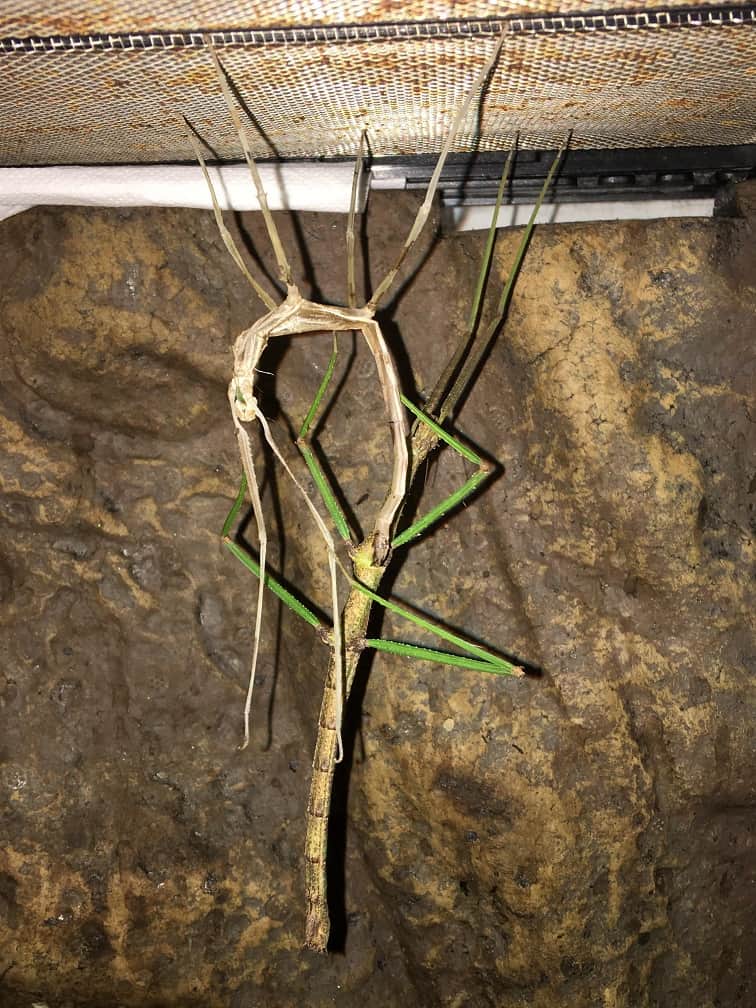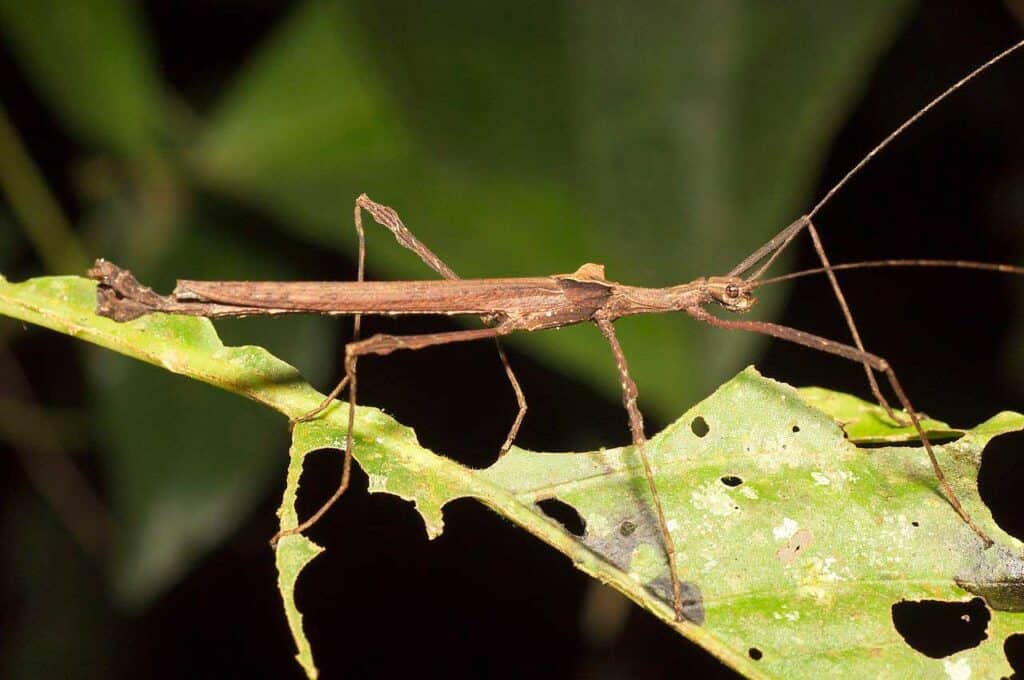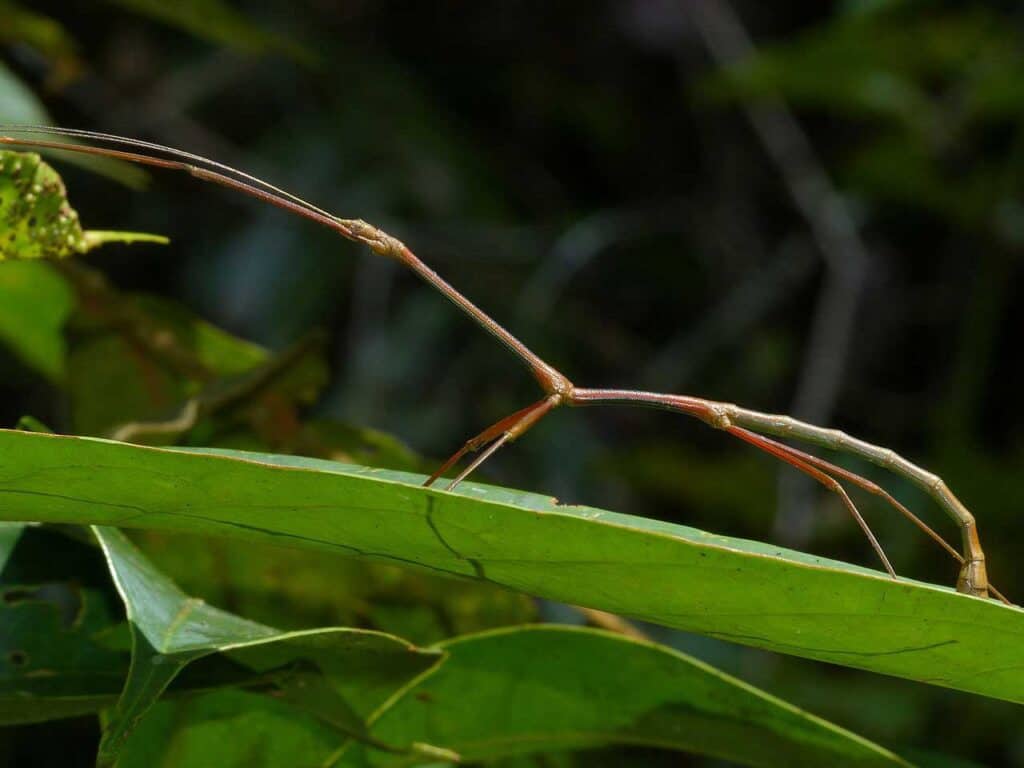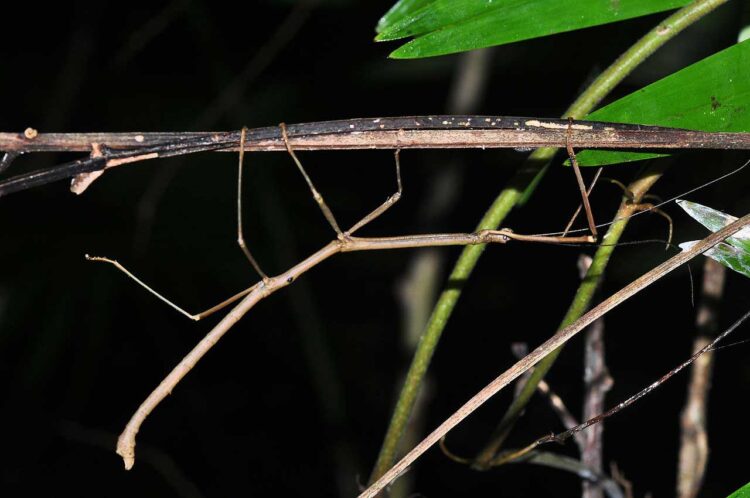Table of Contents
When do stick insects shed their skin? Moreover, do you know how and why stick insects shed their skin?
These are among the many questions novice stick insect owners have in relation to shedding. But perhaps the biggest question of all is the aforementioned ‘when do stick insects shed their skin’?
Unfortunately, there is no simple answer to this question, and much depends on the species. You need to be able to recognise the signs because you shouldn’t disturb your stick insects during this delicate process. However, know that…
Stick insects usually shed their skin between 5 and 9 times before reaching the adult stage (maturity). The number of times this shedding (molting) occurs is dependent upon the species and the sex of the stick insect in question.
Let’s take a look at stick insects and the shedding process.
For a wealth of advice and information on all things stick insects, check out my ebook by clicking here or on either of the images (all open in a new tab). All your stick insect questions covered for just $2.99 (or the equivalent in your currency)!
or on either of the images (all open in a new tab). All your stick insect questions covered for just $2.99 (or the equivalent in your currency)!
Why Do Stick Insects Shed their Skin?
Before answering that question, let’s discuss stick insects and shedding.
Unlike butterflies, for example, this process does not change the makeup of the stick insect . The only difference between a stick insect before shedding and a stick insect after shedding is the size – they will have grown bigger. How much bigger always depends on the species. Some stick insects can be over a foot long at their maximum size while others are barely a half-inch. Some stick insects can double their size each time they shed.
. The only difference between a stick insect before shedding and a stick insect after shedding is the size – they will have grown bigger. How much bigger always depends on the species. Some stick insects can be over a foot long at their maximum size while others are barely a half-inch. Some stick insects can double their size each time they shed.

The primary reason for shedding is to grow. At the same time, a stick insect will also recycle the protein from the skin by eating it after shedding.
As unpleasant as this sounds, it is a natural process the stick insect relies on to get itself the proper nutrients. The stick insect will not eat in the days prior to molting, so the old skin is a vital source of nutrients.
How Often will a Stick Insect Molt?
A stick insect will molt between six and nine times throughout its life. This is all part of the long journey to adulthood. Only when a stick insect reaches its final molting stage will it become a fully-grown adult. Throughout most of its life though it is classed as a subadult.
An adult stick insect will only live for about six months after the shedding process has been completed for the final time. This is also when your species of stick insect will have reached its maximum size.
The number of shedding stages will always depend on the species in question. It is a good idea to record the number of molts your stick insect goes through so that you know exactly where your pet is in its lifespan.
How Does Shedding Work?
Before we get into when stick insects shed their skin, it is important to know how the shedding process works.
The first signs will appear a few days before the process actually begins. Your stick insect will refuse to eat. Unfortunately, new stick insect owners automatically think their stick insect has contracted some sort of fungal infection at this stage, hence the refusal to eat. However, not eating is entirely normal at this stage as the stick insect is about to go through an extremely stressful process.
Your stick insect will also find a quiet place to settle itself upside down. This is the reason the height of the enclosure is so important. At a bare minimum, a molting stick insect should have at least three times its own length as space to molt in. I actually recommend much more than this (my stick insect enclosure is 18 inches in height). By the way, Amazon has a great selection of stick insect enclosures if you are interested. You can see these by clicking here (opens in a new tab).
(opens in a new tab).
How do you know that your stick insect is molting and isn’t sick, though?
Observe its skin carefully. A stick insect preparing to molt will have dulled colours on the skin and may have white spots. This is the most obvious sign that the moulting process is about to begin.
Once the molting process starts, the stick insect will essentially remove its outer coating of skin and emerge larger and stronger. The main challenge for a shedding stick insect is the need to pull its legs and whole body out of the old skin.
If the skin is too tough and the conditions are not humid enough, the insects will have trouble. It is also possible that they could lose a leg in the process.

What are the Biggest Problems When Stick Insects Molt?
Now that you know what to look out for when your stick insect is about to shed its skin, you need to make sure you are offering the right environment for this to happen.
The first issue, as briefly touched upon already, is the amount of space they have. They need to be able to hang upside down in a quiet place. How much space and height they require depends on the species in question.
down in a quiet place. How much space and height they require depends on the species in question.
For example, the common Indian stick insect needs a recommended 18 inches of height. For smaller species you can have less height while, conversely, for bigger species you will need more. This is the reason combining species in the same enclosure should only be done with research into each.
needs a recommended 18 inches of height. For smaller species you can have less height while, conversely, for bigger species you will need more. This is the reason combining species in the same enclosure should only be done with research into each.
Another issue is the temperature.
As you might already know, temperature can influence the growth and development of a stick insect. But humidity is also required to support your stick insects as they shed. Humidity helps make the skin looser and hence easier to shed.
You can increase the humidity in your stick insect enclosure by misting them when you notice that they are preparing to shed.
Generally, the amount of humidity needed depends on the species. You can control the conditions by installing heat lamps and heat bulbs for warmth and misting the enclosure for the humidity. This is especially necessary if you live in a cooler climate.
The dangers of the skin being too hard are two-fold. First, the insects may not be able to shed at all. They could also get stuck on their old skin, which can damage their body and legs.
So be aware of the conditions when they are preparing to shed.
Finally, be conscious that your stick insect will be extremely delicate in the days after moulting. You should refrain from handling them at all as you could seriously injure them at this stage.
You may coax them onto your hand with a leaf, but after shedding this should only be attempted by an experienced stick insect owner.

Do You Need to Do Anything Special in Advance?
Generally, no.
Stick insects are hardy creatures and are more than capable of managing themselves. If the size of the tank is suitable and the temperature and humidity are correct, all you need to do is watch them.
They do not need any real help from you apart from the feeding and enclosure-cleaning process.
In Conclusion – Managing the Shedding Process
Every stick insect has a different number of shedding phases. Furthermore, they all live for different amounts of time. As a general rule of thumb, the larger the stick insect, the longer their lifespans.
So going on from this, there’s really no specific time for the question of when do stick insects shed their skin. But, thankfully, they are self-sufficient when it comes to shedding, just as long as they have the right conditions available.



